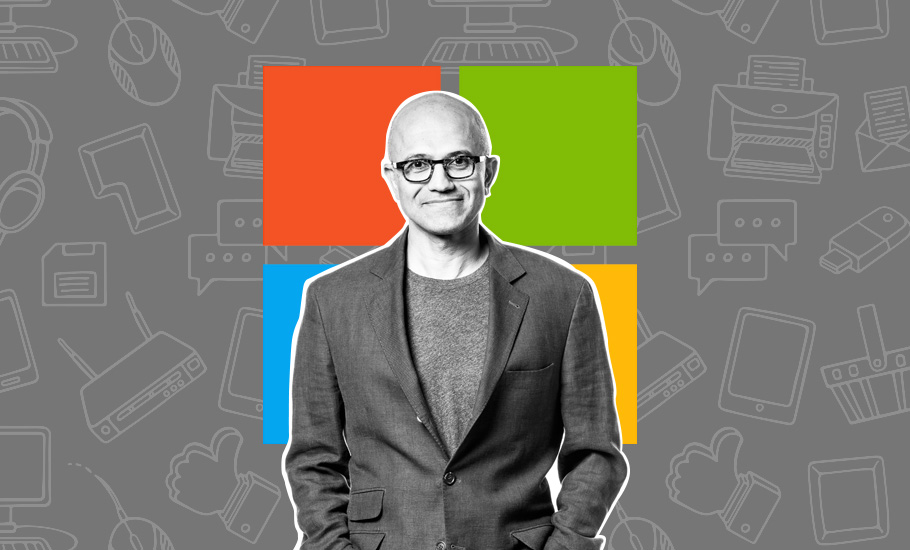
Office with Windows: How Satya Nadella landed top suite at Microsoft
How Satya Nadella transformed Seattle behemoth Microsoft into a lean, mean profit machine with a renewed cloud focus and astute corporate moves

“Our industry does not respect tradition. What it respects is innovation,” says Satya Nadella in his autobiographical book Hit Refresh. The line succinctly explains the ascent of Nadella, the Microsoft CEO who has just been named Chairman.
When the 54-year-old Indian American took over as CEO of the Seattle-based technology giant in 2014, Microsoft was struggling to stay relevant vis-à-vis younger and nimbler companies like Google and Amazon, as well as niche start-ups that were giving a tough fight for client dollars.
Nadella set to work systematically, shedding some of the company’s legacy issues, shifting its focus to newer technologies such as cloud, artificial intelligence (AI), revamping the human resource ethos, and placing aggressive bets on inorganic growth. Today, he heads an entity that’s the world’s second most valuable enterprise, with a market cap of $1.9 trillion, next only to Apple.
Technology pivot
When Nadella replaced Steve Ballmer as Microsoft CEO in 2014, personal computers were still its bread-and butter. Both hardware sales and the Windows 8 operating system were stagnating. From there, he led its shift to mobile-led computing, taking on Apple and Google. So much so that arch rival Apple has helped install MS Office software on iPhones.
Nadella’s cloud push began even earlier, when he was Executive Vice-President of Microsoft’s Cloud and Enterprise Group. For three years from 2008, he first learnt cloud services — technology and business — and rapidly transformed it into a $20-billion business for his employer.
The cloud success did not come easy. It involved taking tough decisions such as slashing funds for Windows, according to a Bloomberg report. But once it hit the growth path, Microsoft quickly took on Google Cloud and Amazon Web Services (AWS). Today, Microsoft Azure’s share in the $130-billion cloud market is estimated at 20%, against AWS’ 32% and Google Cloud’s 9%.
Corporate leadership
Nadella was also quick to realise mistakes and cut the losses. For instance, Microsoft had bet big on its multi-billion-dollar investment in Finnish mobile phone giant Nokia. But wrote it off, in 2015, when the business did not seem to be making much headway. This cost about 18,000 job losses and earned it sharp criticism from across the world.
But Nadella more than made up for it with some astute acquisitions that have earned the company strong avenues for future growth. Among these are internet hosting software firm GitHub, professional networking platform LinkedIn, AI firm Nuance and gaming major Minecraft.
Among the keenest proponents of focusing on employee culture to reenergise businesses, Nadella made a 180-degree change in Microsoft’s human resource ethos when he became the CEO. Not only did he overhaul the company’s sales team strategy but also pushed the ‘empathic leadership’ concept across the board. This involves taking everybody along, and making sure the employee’s aspirations align perfectly with that of the company.
What’s on the horizon
For Nadella, the future promises to be challenging, too. The pandemic and the resultant work-from-home and hybrid workplaces culture are bound to vastly impact the future direction of enterprise technology.
Also read: It’s back to office for TCS techies post pandemic: Here’s why and how
The company is set to roll out the next generation of Windows, which again comes with a new set of challenges. The interface revamp, codenamed ‘Sun Valley’ is said to involve changes in user interface, icons, menus and Windows Store. Microsoft is also planning big moves in new technologies such as AI, machine learning, quantum computing and smart devices.
The India connection
The country has always taken pride in the rise of any Indian anywhere in the world, irrespective of his or her nationality. Thursday’s elevation of Nadella grabbed headlines and brought in all-round cheer.
The new Microsoft Chairman joins a growing tribe of Indians who are occupying the top chair at multinational corporations. Among these are Shantanu Narayen of Adobe, Ajaypal Singh Banga of Mastercard, Arvind Krishna of IBM and Sundar Pichai, who heads Alphabet, the parent firm of Google.

